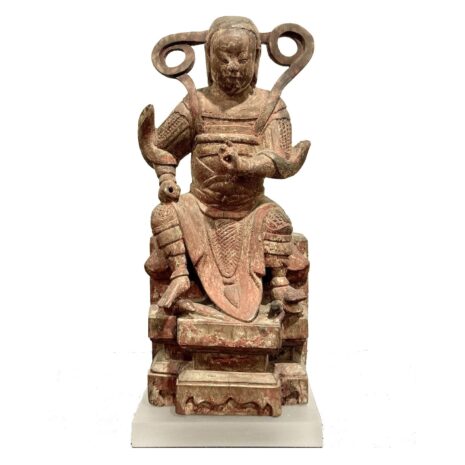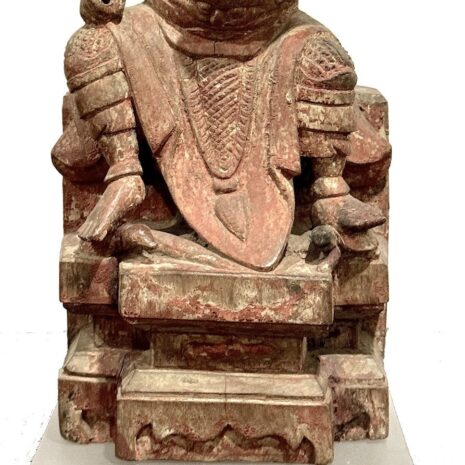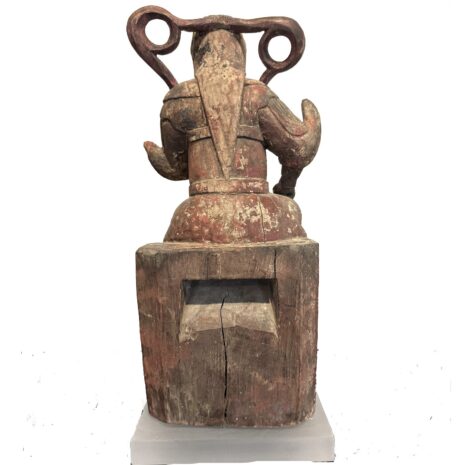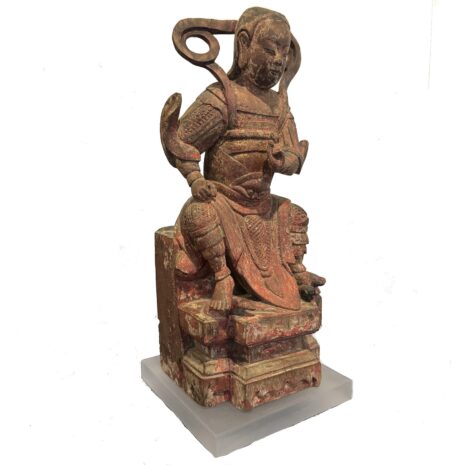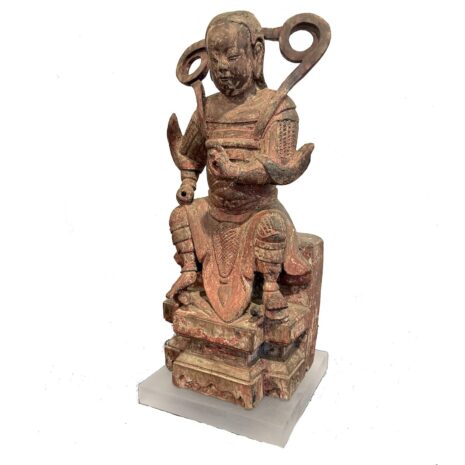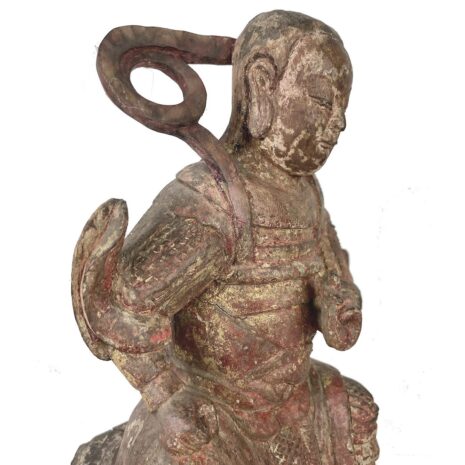Antique Wood Zhenwu the Taoist “Perfected Warrior,” China (19416)
Original price was: $1,250.00.$975.00Current price is: $975.00.
H: 15.25″ W: 6.75″ D: 6.75″ |CALL 213-568-3030 OR EMAIL [email protected] FOR SHIPPING
Zhenwu (Perfected Warrior) one of most important and powerful Taoist deities, is revered for magical powers to suppress demonic forces. Forceful wood provincial image for personal devotion reflecting his iconography: on throne, bare feet resting on snake and tortoise, celestial scarf and maille armor.
Description
One of the most important Taoist deities and the most popular one during the Ming and Qing dynasties, Zhenwu was god of one of the 4 cardinal directions (the north) revered for his potent magical powers to suppress demonic forces. Zhenwu was a protector of the state and the imperial family venerated for his ability to heal and protect China and its emperor. During imperial dynastic times, he was considered a patron of soldiers and a protector of national security. In 1304 he received several imperial titles: Supreme Emperor of the Dark Heaven, Primal Sage and Benevolent Majesty. As a syncretic deity, he was a significant figure in the Buddhist pantheon and was considered a mighty exorcist in Chinese Popular Religion. He is still venerated today as a stellar god and as one the most powerful ministers of the Jade Emperor for whom he uses his potent magical powers to suppress demonic forces.
As a renowned emperor, Zhenwu was worshipped in imperial and provincial temples throughout China. Statues were made in all sizes and materials. This carved wood provincial devotional image was for a home altar rather than an imperial sanctioned image that were metal and displayed in temple settings.
He sits in a dignified posture on an elaborate multi tiered throne wearing military maille metallic armor with a taotie image at his waist and long hair draped down his back. In ancient times the taotie represented greed and gluttony. In a military context it came to represent protection for ones tribe and a fearful antagonistic force to their enemies .
As traditional, in this dynamic carving he is barefoot with a snake under his right foot and a tortoise under his left, his most notable iconological features. These mythical animals symbolize those over whom he presided including “…both celestial officers under his command, [and] former demons that were conquered by him.” (Stevens, p.19.) Greve claims the ancients believed there were no male tortoises so the females had to mate with a snake, and “…the tortoise embracing a snake became the protector symbol of the north; but as the word ‘tortoise’ was taboo in Chinese, it was referred to as the “dark warrior” (genbu) and finally became “… one of the protector gods of the four areas, Zhenwu.” His right hand may have held his weapon, a sword. His head is framed in a celestial long ribbon from the chest above the shoulders, behind his head and forms two circles. The first character for the word long ribbon (shoudai) means longevity (shou) and the second means both “to bring” and “ribbon” (dai) which thus creates the auspicious Chinese phrase “May longevity bring blessings.” Ribbons and sashes surrounding, next to or behind an object, person or deity indicates a significant, special or extraordinary power they or the object represents.
Mounted on a frosted Lucite stand, it is in very good condition with expected losses and fading in colors consistent with age and use.
Click here for the Blog Consecrating Wooden Images to Imbue Them with A Life Force
Sources
Gabi Greve, Daruma Museum, Tortoise and Snake,
Jeremy Roberts, Chinese Mythology A to Z, New York, Facts on File, 2004.
Brock Silvers, The Taoist Manual: An Illustrated Guide, Applying Taoism to Daily Life, Honolulu, Sacred Mountain Press, 2005.
Keith G. Stevens, Images of Asia Chinese Mythological Gods, Oxford University Press, New York, 2001.
Patricia Bjaaland Welch, Chinese Art: A Guide to Motifs and Visual Iconography, North Clarendon, Vt., Tuttle Publishing, 2008.
The Art Institute of Chicago, Taoism and the Arts of China: The Taoist Renaissance, 2000
Additional information
| Place of Origin | China |
|---|---|
| Weight | 4lbs 6oz |
| Period | Antique, Qing Dynasty |
| Shipping Box Size | Oversized. Call 213-568-3030 or email [email protected] for shipping. |
| Date | 18th century |
| Materials and Technique | Wood |
| Dimensions (inches) | Ht:15.25" W: 6.75" D: 6.75" |
| Dimensions (metric) | Ht: 38.73cm W: 17.14cm D: 17.14cm |
| Condition | Very good, see description |

